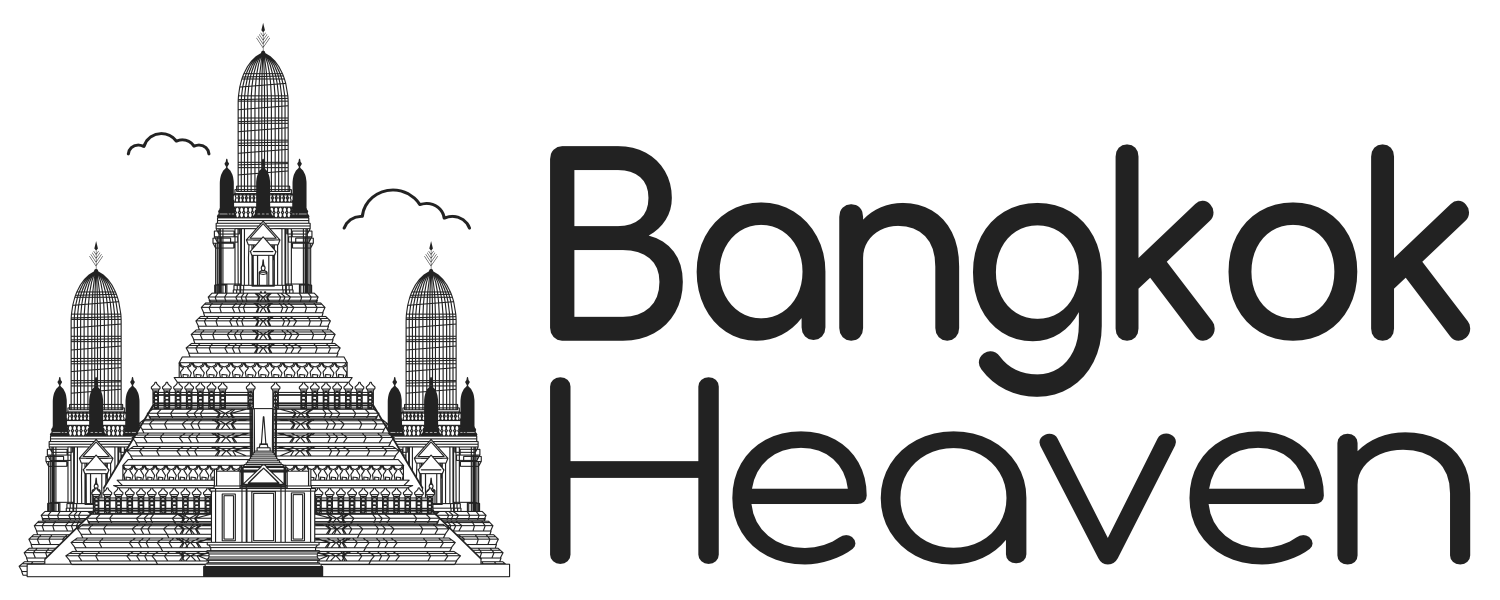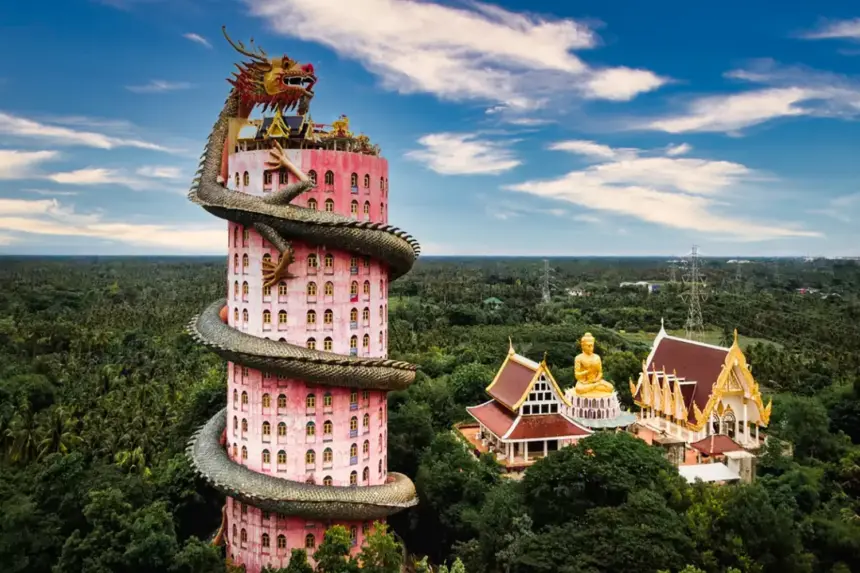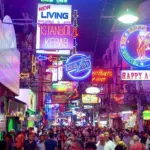Wat Sam Phran: The Dragon Temple of Thailand
Wat Sam Phran, also known as the “Dragon Temple,” is one of Thailand’s most unique and visually striking religious sites. Located approximately 40 kilometers west of Bangkok in Nakhon Pathom Province, Wat Sam Phran is not just a temple; it is a testament to the rich imagination and spiritual depth that characterize Thai culture. The temple is most famous for its distinctive 17-story pink tower, which is wrapped by a massive dragon sculpture that appears to be climbing to the top. This article delves into the history, architectural significance, spiritual importance, and visitor experience of Wat Sam Phran, exploring why this temple stands out as a must-see attraction in Thailand.
A Brief History of Wat Sam Phran
Wat Sam Phran was established in 1985 under the guidance of Phra Khru Bua Pha Thevi, a monk who sought to create a place of worship that was not only spiritually enriching but also architecturally inspiring. Unlike many of Thailand’s temples, which are steeped in centuries of history, Wat Sam Phran is relatively modern. However, its design and symbolism are deeply rooted in traditional Thai and Buddhist concepts.
The construction of the temple was a community effort, with local artisans and craftsmen contributing to its development. The most iconic feature of Wat Sam Phran—the pink tower with the dragon—was designed to symbolize the journey towards enlightenment, with the dragon representing protection, strength, and the path to spiritual awakening. The temple complex also includes other structures, statues, and gardens that reflect Buddhist teachings and Thai cultural motifs.
Architectural Significance
Wat Sam Phran’s architecture is unlike any other temple in Thailand. The towering pink cylindrical structure, which stands at 80 meters (about 260 feet) tall, is the centerpiece of the complex. What makes this tower truly remarkable is the enormous dragon that coils around it. The dragon, which is an impressive 300 meters (984 feet) long, appears to be ascending towards the heavens, symbolizing the spiritual ascent that devotees strive for in their practice of Buddhism.
The dragon’s body is intricately detailed, with scales, claws, and a fierce yet majestic face that gazes down from the top of the tower. The dragon’s tail wraps around the base, and its head reaches the top floor of the building, creating a continuous spiral that draws the eye upward. Visitors can actually walk through the dragon’s body, as there is a staircase inside it that leads to the top of the tower. This unique design allows for a deeply immersive experience, as visitors literally ascend through the dragon to reach a higher spiritual plane.
The tower itself is painted in a vibrant pink color, which is associated with compassion and love in Thai culture. The juxtaposition of the bright pink tower and the emerald-green dragon creates a visually stunning effect that makes Wat Sam Phran a popular subject for photography and art.
Spiritual Importance
While the architecture of Wat Sam Phran is undeniably impressive, its spiritual significance is equally profound. The temple is dedicated to the worship of Buddha, and it serves as a place of meditation, reflection, and religious ceremonies for both monks and laypeople. The dragon, which plays a central role in the temple’s design, is a powerful symbol in Buddhism and Thai culture.
In Buddhism, dragons are often seen as protectors of the Dharma, the teachings of the Buddha. They are considered to be benevolent beings that guard sacred spaces and offer protection to those on the path to enlightenment. At Wat Sam Phran, the dragon represents this protective energy, encircling the temple and guiding worshippers as they ascend towards spiritual enlightenment.
The journey to the top of the tower is symbolic of the Buddhist path to Nirvana, the ultimate goal of liberation from the cycle of birth, death, and rebirth. As visitors climb the staircase within the dragon, they are encouraged to reflect on their own spiritual journey, overcoming obstacles and temptations, much like the serpent-like dragon climbing toward the sky.
At the top of the tower, visitors are rewarded with a serene space for meditation and prayer, as well as breathtaking views of the surrounding landscape. The sense of elevation and tranquility at the summit serves as a metaphor for the peace and clarity that can be achieved through spiritual practice.
The Complex and Its Attractions
Beyond the iconic tower and dragon, Wat Sam Phran’s temple complex includes a variety of other structures and attractions that enhance the spiritual and cultural experience. The temple grounds are filled with statues, shrines, and gardens, each with its own symbolic meaning and connection to Buddhist teachings.
The Giant Buddha Statue
One of the first sights that greets visitors as they enter the temple grounds is a large seated Buddha statue, which radiates a sense of calm and serenity. The statue is a focal point for prayer and offerings, and it serves as a reminder of the Buddha’s teachings on compassion, wisdom, and the path to enlightenment.
The Turtle Pond
Another interesting feature of Wat Sam Phran is its turtle pond, which is home to numerous turtles and fish. In Thai culture, turtles are symbols of longevity, stability, and protection. Visitors often feed the turtles as an act of merit-making, believing that such acts will bring them good karma and a longer, more prosperous life.
The Elephant Statues
Wat Sam Phran is also known for its numerous elephant statues, which can be found throughout the temple grounds. Elephants hold a special place in Thai culture and Buddhism, symbolizing strength, patience, and wisdom. The statues serve as reminders of the importance of these virtues in one’s spiritual practice.
The Meditation Caves
For those seeking a more immersive spiritual experience, Wat Sam Phran offers meditation caves that are carved into the hillside. These caves provide a quiet and secluded space for meditation, away from the hustle and bustle of the temple grounds. The cool, dark interiors of the caves create an ideal environment for deep reflection and contemplation.
Visiting Wat Sam Phran
Wat Sam Phran is easily accessible from Bangkok, making it a popular day trip destination for both locals and tourists. The temple is located in the Sam Phran district of Nakhon Pathom Province, about an hour’s drive from central Bangkok. Visitors can reach the temple by car, taxi, or organized tour, and there is ample parking available on-site.
The best time to visit Wat Sam Phran is in the early morning or late afternoon when the weather is cooler and the temple is less crowded. The temple grounds are open to the public every day, and there is no entrance fee, although donations are encouraged to support the maintenance of the temple.
Visitors are advised to dress modestly, as Wat Sam Phran is an active place of worship. Shoulders and knees should be covered, and shoes must be removed before entering any of the temple buildings. Photography is allowed, but visitors should be respectful of those who are praying or meditating.
For those interested in learning more about Buddhism, Wat Sam Phran offers opportunities to participate in meditation sessions, listen to Dharma talks, and engage with the monks who reside at the temple. These experiences provide valuable insights into the spiritual practices and teachings of Buddhism.
The Future of Wat Sam Phran
Wat Sam Phran continues to attract visitors from around the world, not only for its unique architecture but also for its deep spiritual significance. The temple is a testament to the creativity and devotion of the Thai people, and it stands as a symbol of the enduring relevance of Buddhism in modern society.
As interest in spiritual tourism grows, Wat Sam Phran is likely to see an increase in visitors seeking both cultural enrichment and spiritual insight. The temple’s blend of artistic beauty and spiritual depth makes it a place where visitors can connect with both their inner selves and the rich cultural heritage of Thailand.
In conclusion, Wat Sam Phran is more than just a temple; it is a journey—both physically and spiritually. From the moment one steps onto the temple grounds, they are invited to embark on a path of exploration and reflection, guided by the protective embrace of the dragon. Whether one visits for the architecture, the spirituality, or simply the experience, Wat Sam Phran leaves a lasting impression, reminding all who visit that the journey to enlightenment is one of beauty, challenge, and profound discovery.










